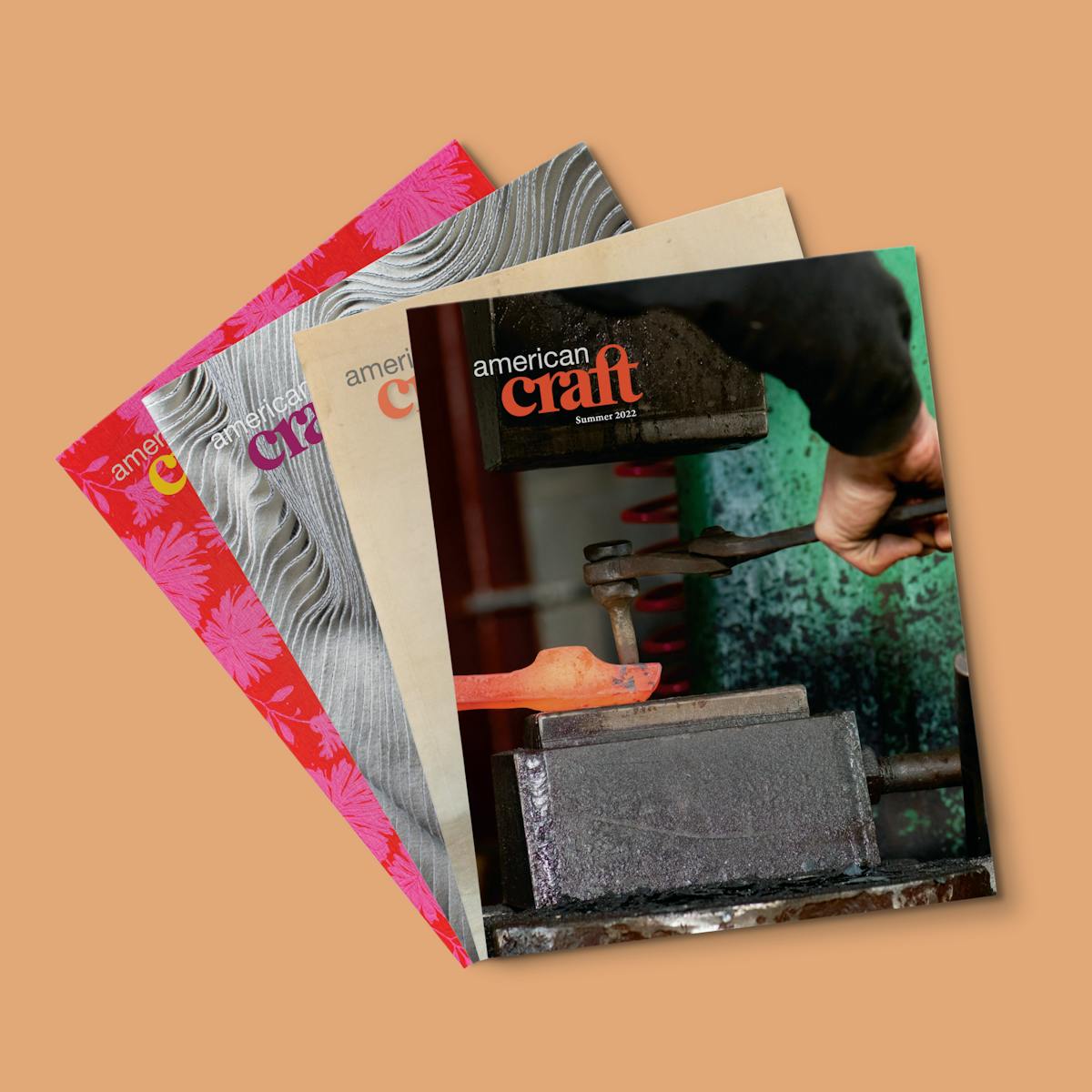An Homage to Yugi
An Homage to Yugi
.JPG?fit=max&w=1200&auto=compress&cs=srgb)
Angel Yoon Kyung Cho’s family used a yugi bowl similar to this one to honor their ancestors during a jesa ceremony. Photo courtesy of Etude Boutique, Los Angeles.
Following the ceremony, my grandmother would guide us out of the room to give the ancestors privacy while eating, leaving the door slightly ajar so they wouldn’t feel trapped. I always imagined peeking through the gap to see the semi-transparent figures of old Korean men floating over the table, indulging in the delicacies in the golden bowls. A yugi dish is not only a beautiful vessel to hold food but also a medium that forges transgenerational connections, from the present to the past, the living to the deceased.
The traditional bangjja method of forging yugi—including dishes, bowls, spoons, and chopsticks—is a rigorous and delicate process. Often called “the harmony of a thousand strikes,” it requires the strength and precision of multiple craftsmen to heat and hammer the bronze plate into form while it endures the fiery furnace. As for the yugi bronze itself, it’s made by melting tin and copper together in a precise ratio; the result is a radiant, strong metal with a unique set of properties. It is known for its heat retention capabilities as well as its ability to sterilize bacteria and to change color when in contact with poison.
.jpg?fit=max&w=1200&auto=compress&cs=srgb)
Photo courtesy of Etude Boutique, Los Angeles.
My Korean American identity is also a melding—the outcome of forging two different cultures together. Not fully belonging to either, I gained the ability to adapt to and embody both cultural perspectives as I formed my own hybrid identity. Practicing pottery and meditation connects me with my Eastern roots while I live within my Western context.
I spent some time in my mid-20s living in a Zen Buddhist monastery in Northern California. As students of meditation, we would have one-on-one dialogues about our practice with senior dharma teachers. During one of these encounters, I sought guidance on how I could achieve my ideal form of living. My teacher’s response baffled me at the time: in order to achieve what I wanted, I had to let go of wanting. It wasn’t until later that I came to understand that this was a teaching about presence—an essential practice in both meditation and pottery. In my first months of learning to throw on the wheel, I had a realization that centering wasn’t achieved through force or intellectual understanding. Instead, it was a result of presence. As I let go of my desire to control the clay and brought my attention back to my posture, the quality of my breathing, and the pressure of my palms on the surface of the clay, centering took place. Centering required letting go of my thoughts and returning to my body.
Caring for the yugi brings it to life, deepening its value and creating a richer experience when you use it.
The hammering of bangjja yugi can be seen as an act of centering. More than the mind’s knowledge, it requires the knowledge embedded in the body: the feel of synchronized movements in the process of making, the sounds of the metal being struck, and an intuitive understanding of the material through the sense of touch. Embodied knowledge is acquired through mindful presence and patient repetition. Maintaining and caring for yugi also requires presence. The bronze must be polished frequently by hand to preserve its lustrous golden surface, and it needs to be stored properly in a dry environment to prevent rusting. Caring for the yugi brings it to life, deepening its value and creating a richer experience when you use it.
Craft isn’t only a form of artmaking; it’s a transformative human ritual that forges connections between the past, present, and future. Through working with clay and embodying the knowledge of my ancestors, I am able to connect with the lineage of potters who came before me. Caring for and maintaining crafted objects, such as yugi tableware, that are specifically intended for rituals allows me to connect with my past in another way, and to carry those rituals forward to future generations. Yugi, which from one point of view is simple tableware, is also an embodiment of these powerful ways of relating to time. Together they form an invisible web of cultural connections that help me define who I am.
angel-cho.com | @angeljo.ceramics
Discover More Inspiring Artists in Our Magazine
Become a member to get a subscription to American Craft magazine and experience the work of artists who are defining the craft movement today.





